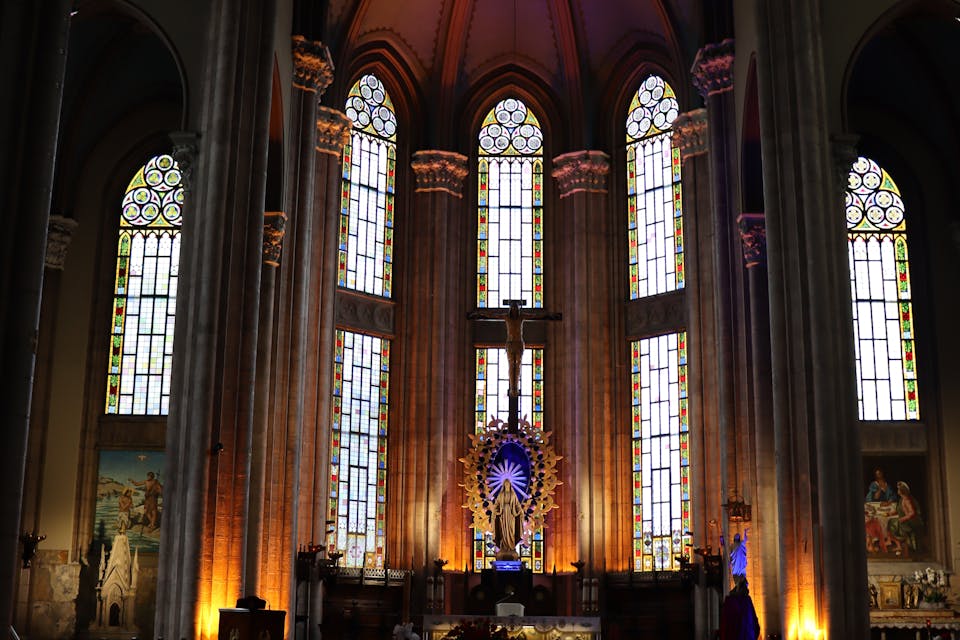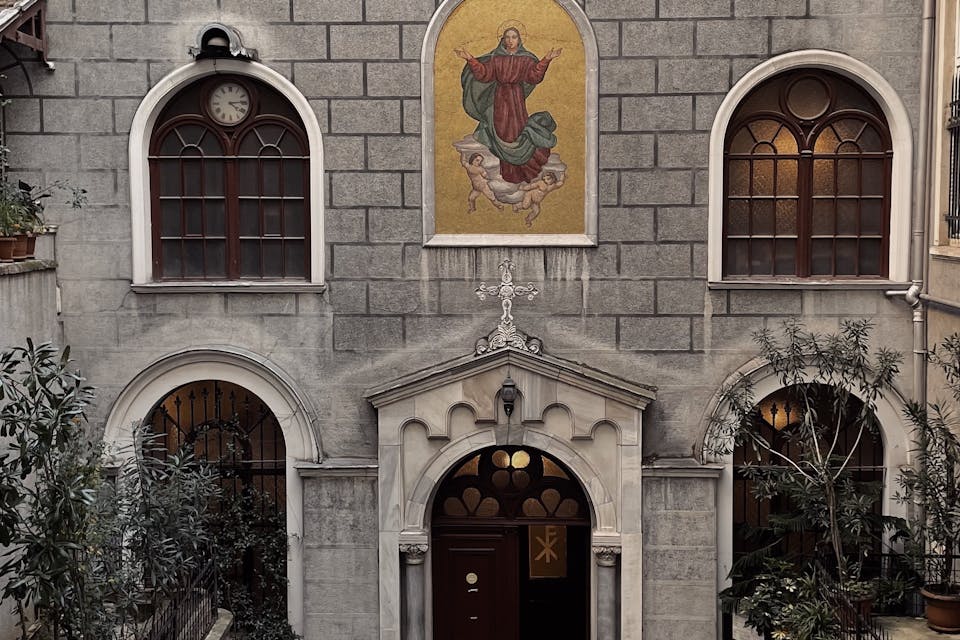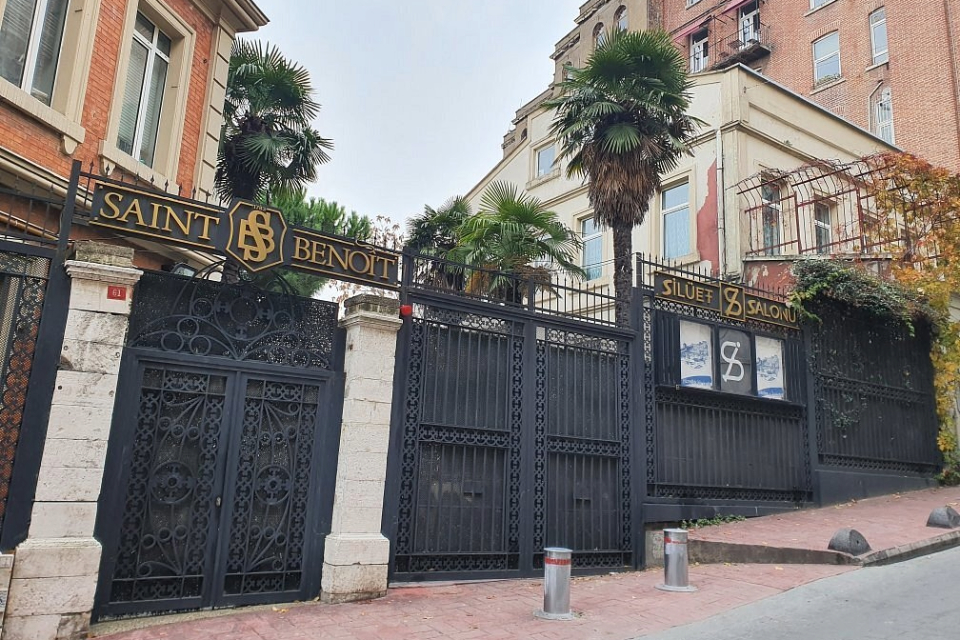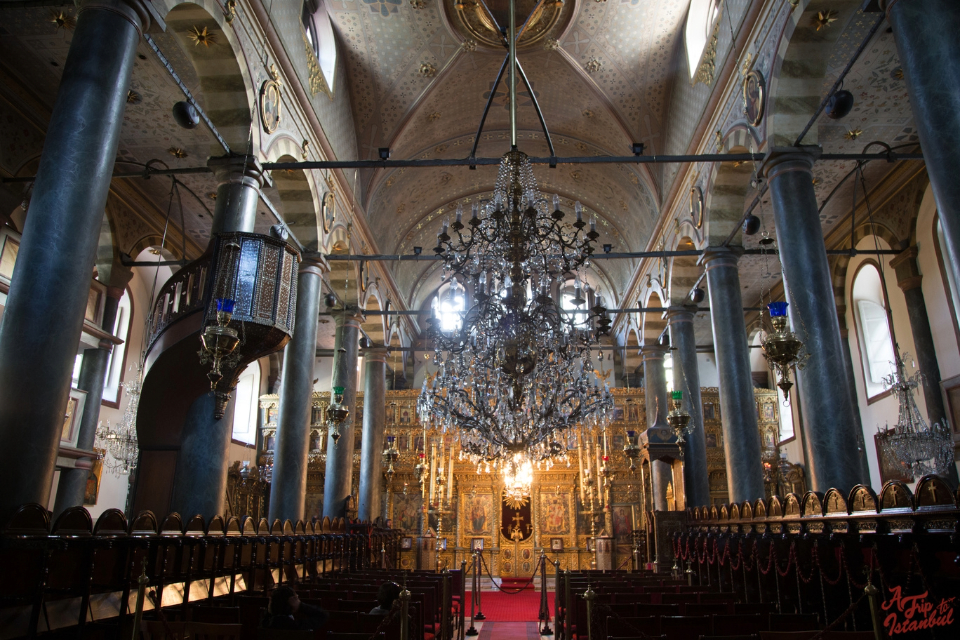A Guide to Istanbul's Most Notable Catholic Churches
Table of Contents
Istanbul, a city renowned for its rich cultural and historical tapestry, is home to a diverse array of religious sites. Among them are several Catholic churches that stand as testaments to the city's multifaceted history and the vibrant community of Catholics who have lived here over the centuries. This post delves into some of the most notable Catholic churches in Istanbul, highlighting their historical significance, architectural beauty, and the role they play in the local community.
1. Church of St. Anthony of Padua
Location: Istiklal Avenue, Beyoğlu
1.1. History and Significance
The Church of St. Anthony of Padua, often simply referred to as St. Anthony's, is the largest Catholic church in Istanbul and a landmark of religious diversity in the city. Established in 1912 by the Italian community, it stands as a testament to the vibrant presence of Catholics in Istanbul. The church's neo-Gothic architecture, designed by the Italian architect Giulio Mongeri, features intricate stained glass windows and a grand façade that captivates visitors. The church's location on the bustling Istiklal Avenue, a major thoroughfare known for its historical and cultural significance, adds to its prominence.
1.2. Features
-
Stunning Stained Glass Windows: The church boasts beautiful stained glass windows depicting scenes from the Bible, adding a colorful and spiritual dimension to the worship experience.
-
Serene Interior: The interior is adorned with intricate woodwork and a peaceful atmosphere, providing a tranquil space for reflection amidst the city's hustle.
-
Cultural Events: Regular Mass services, along with special events and cultural celebrations, make St. Anthony’s a vibrant center for the Catholic community in Istanbul.

2. Church of St. Mary Draperis
Location: Galata, Beyoğlu
2.1. History and Significance
Built in the late 19th century, the Church of St. Mary Draperis is a significant Catholic church with a distinct Romanesque Revival style. Named after the Catholic order of the Daughters of Charity, this church was designed to serve the French Catholic community residing in Istanbul. Its architectural style is characterized by its elegant façade and detailed ornamentation, which stand out amidst the predominantly Byzantine architecture of the city.
2.2. Features
-
Romanesque Revival Architecture: The church's Romanesque Revival design features intricate details and a commanding presence, reflecting the artistic tastes of the late 19th century.
-
Quiet Retreat: The church provides a serene and contemplative environment, ideal for personal reflection and spiritual growth.
-
Community Engagement: It hosts regular services and community activities, fostering a sense of unity among its congregants.

3. Church of St. Benoît
Location: Galata, Beyoğlu
3.1. History and Significance
Established in the early 19th century, the Church of St. Benoît is a notable example of French Gothic architecture in Istanbul. Founded by the French Benedictines, the church reflects the artistic and architectural influences of its founders. Its distinctive Gothic style, with pointed arches and detailed stone carvings, makes it a unique landmark in the city.
3.2. Features
-
French Gothic Design: The church's Gothic architectural elements, including pointed arches and intricate stonework, showcase the craftsmanship of the French Benedictines.
-
Peaceful Garden: The church is surrounded by a tranquil garden, offering a peaceful retreat for visitors and parishioners alike.
-
Cultural Significance: It plays an important role in the cultural and religious life of the French expatriate community in Istanbul, hosting various events and services.

4. Church of St. George
Location: Pera, Beyoğlu
4.1. History and Significance
The Church of St. George, also known as the Church of St. George of the Greeks, holds a special place in Istanbul's religious landscape. Built in the 19th century, it serves as a key place of worship for Greek Catholics in the city. The church’s architecture blends traditional Greek Orthodox elements with Ottoman influences, reflecting the historical interactions between these two cultures.
4.2. Features
-
Greek Orthodox Influence: The church features traditional Greek Orthodox architectural elements, including iconic domes and elaborate iconography.
-
Historical Icons: The interior houses a collection of historical icons and religious artifacts, offering insights into the Greek Catholic tradition.
-
Cultural Celebrations: The church is a hub for Greek Catholic community events and cultural celebrations, enriching the local cultural fabric.

5. Church of the Holy Spirit
Location: Şişli
5.1. History and Significance
The Church of the Holy Spirit in Şişli is a modern Catholic church that reflects the evolving nature of Istanbul’s religious landscape. Established to meet the needs of the growing Catholic population in the area, the church features a contemporary design that contrasts with the more traditional churches in the city. Its modern architecture and community-oriented programs make it a focal point for local Catholics.
5.2. Features
-
Contemporary Design: The church’s modern architectural style, with clean lines and functional spaces, represents a departure from traditional church designs.
-
Active Community Programs: It offers a range of programs and outreach initiatives, including youth activities and community service projects.
-
Inclusive Services: Regular Mass services and events cater to a diverse congregation, reflecting the inclusive nature of the modern church.

6. Chora Church Istanbul
Location: Edirnekapı
6.1. History and Significance
Originally built as a Byzantine church dedicated to the Holy Savior, Chora Church (Kariye Museum) is renowned for its stunning Byzantine mosaics and frescoes. Although it was converted into a mosque and later into a museum, its artistic and historical significance remains immense. The church’s artwork provides a window into the religious and cultural history of the region.
6.2. Features
-
Byzantine Art Masterpieces: The church is famous for its exceptional mosaics and frescoes depicting biblical scenes and saints, showcasing the pinnacle of Byzantine art.
-
Architectural Fusion: The building features a blend of Byzantine and Ottoman architectural elements, reflecting its diverse historical influences.
-
Historical Insight: Visiting Chora Church offers valuable insights into the religious art and architecture of the Byzantine period.

7. Saint Stephen’s Orthodox Church
Location: Balat
7.1. History and Significance
Saint Stephen's Church, also known as the Iron Church, is a remarkable example of 19th-century religious architecture. Built by the Bulgarian Orthodox community, the church is notable for its extensive use of iron in its construction. The church's design and materials reflect the artistic and engineering advancements of its time.
7.2. Features
-
Iron Architecture: The church's use of ironwork in its construction is a unique feature, distinguishing it from other religious buildings in Istanbul.
-
Architectural Details: Intricate architectural details and a distinctive design make it an important example of 19th-century ecclesiastical architecture.
-
Cultural Landmark: As a symbol of the Bulgarian Orthodox community's heritage, it holds significant cultural and historical value.
8. Aya Yorgi Church
Location: Adalar
8.2 History and Significance
Aya Yorgi Church, dedicated to Saint George, is a historic church located on the outskirts of the city. It features traditional church architecture and serves as an important site for local religious celebrations and community gatherings. The church's historical significance is reflected in its design and the role it plays in preserving local religious traditions.
8.3 Features
-
Traditional Architecture: The church’s architecture includes traditional elements that highlight its historical and cultural heritage.
-
Community Gatherings: It hosts various religious and community events, making it a central part of local religious life.
-
Historical Context: Aya Yorgi Church offers a glimpse into the architectural evolution of churches in Istanbul and their role in the community.
Conclusion
The Catholic churches in Istanbul offer a fascinating glimpse into the city’s diverse religious and cultural landscape. Each church, with its unique history and architectural style, contributes to the rich tapestry of Istanbul’s heritage. Whether you’re a visitor interested in historical architecture or a local seeking a place of worship, these churches provide a welcoming and enriching experience. Exploring these sacred spaces not only deepens your understanding of Istanbul’s multiculturalism but also allows you to appreciate the city’s commitment to preserving its diverse religious traditions.
Feel free to visit these remarkable churches and immerse yourself in their history and beauty. From the grandeur of St. Anthony’s on Istiklal Avenue to the artistic splendor of Chora Church, Istanbul’s Catholic churches offer something for everyone to discover and cherish.